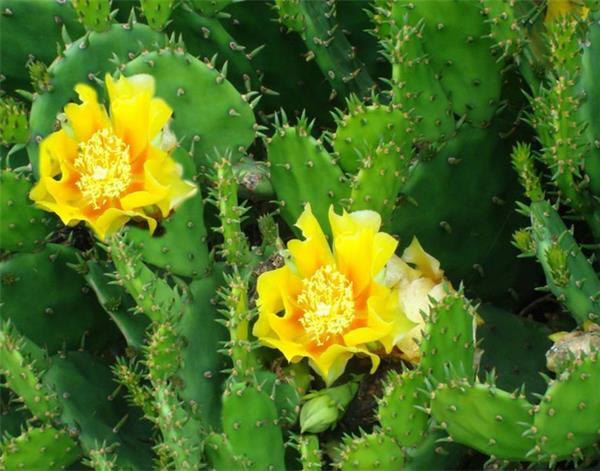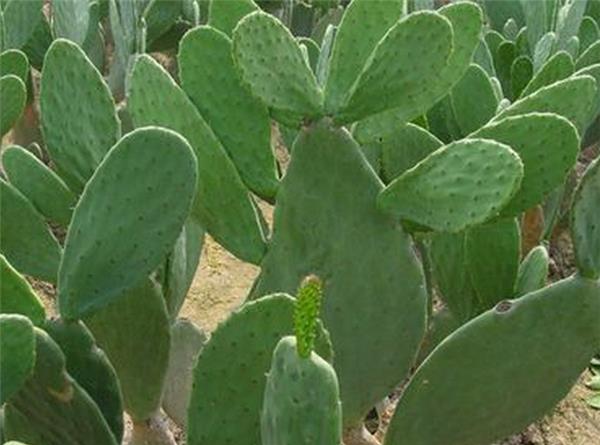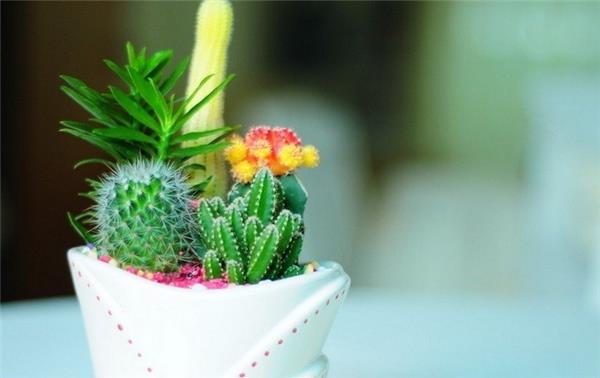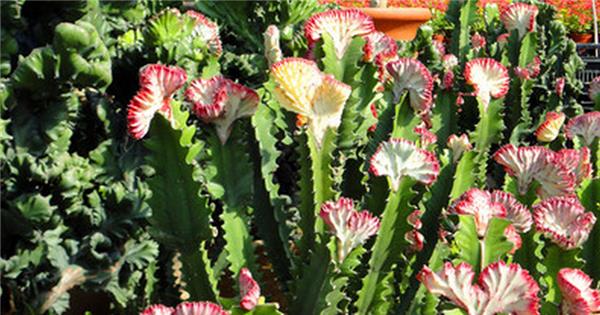Introduction and cultivation of cactus love him please send him cactus hate him please send him cactus
Cactus is a special ornamental plant, in general residential conditions, make full use of space, cultivate dozens of pots of all kinds of cactus, layout of a small "cactus garden" is not difficult. When the turn of spring and summer, a variety of cactus on the windowsill open a dazzling array of flowers, people after work, rest under such conditions, can not only eliminate fatigue, but also can be said to be a kind of enjoyment of natural beauty. Next, we will introduce the cactus.

I. introduction of cactus
Cactus (Cactaceae) is a plant and the national flower of Mexico. A family of desert plants of the order Caryophyllaceae. In order to adapt to the lack of water vapor in the desert, the leaves evolve into short thorns to reduce water evaporation and can also be used as a weapon to prevent animals from swallowing; the stem evolves into a thick, watery shape; at the same time, it grows roots with very large coverage. Rain Water, which is used as the most absorbed during heavy rain, currently has nearly 2000 species of cacti. The cactus family is native to North and South America and extends southward from British Columbia and Alberta to Chile and Argentina. Mexico has the most kinds of cactus. Only Rhipsalis may be native to the Old World and distributed in East Africa, Madagascar and Sri Lanka. But many scholars believe that this genus introduced these regions from other parts of the world. Cactus flowers are native to South America and the North American continent, ranging from Ontario, Canada, at 50 degrees north latitude, to Santa Cruz, Argentina, 50 degrees south.
According to relevant information, after Columbus discovered the New World in 1496, in 1540, the cactus was first brought into Europe by seafarers from the Caribbean islands in South America, and introduced into Japan in 1669. 400 species of cactus have been recorded in the Dictionary of Botany published in England in 1840. At that time, cactus flowers have been developed from wild introduction to artificial cultivation, through horticultural cultivation, the original wild cactus has been improved into a special ornamental flower. Most cacti grow in dry environments. Some are column-shaped, more than 10 meters high, weighing about two or three thousand jin, standing tall and spectacular. Some cactus with thorns live for more than 500 years and can grow into giant balls two or three meters in diameter. people split its upper part and dig for tender, juicy stems to quench their thirst and hunger. Cactus also has a special ability, in the dry season, it can go into dormancy without eating or drinking, minimizing the consumption of nutrients and water in the body. When the rainy season comes, they wake up very sensitively, and the roots immediately become active, absorbing a large amount of water, making the plants grow rapidly and blossom and bear fruit quickly. Some cactus plants have carrot-shaped roots that can store 70 to 80 jin of water. Someone once wrapped a cactus in a dry paper bag for more than two years. Although it was a little wrinkled, it poured it into a basin, and soon after watering it, it grew new roots and returned to growth. Cactus is appreciated by human beings for its wonderful structure, amazing drought resistance and indomitable vitality.

Cactus also has grotesque stems and bright flowers. Although the strange shape and sharp thorns of cactus are daunting, but their flowers are extraordinarily delicate and colorful, and tassel-like spikes. Such as the long whip-shaped "Moon Night Queen", with large white flowers with a diameter of 50 to 60 meters. Epiphyllum, which is described as a "flash in the pan", is an epiphytic type of cactus native to the tropical forests of Central and South America.

2. Cultivation techniques of cactus
Indoor cultivation
Cactus is widely cultivated indoors from wild to indoor, which reflects a trend of urban residents choosing potted flower varieties. Because the building area is limited and the air is relatively dry, the cultivation of large or delicate potted flowers often does not grow well, so it is most suitable to choose some varieties with small size, drought tolerance, simple management and high ornamental value. Cactus plants just meet these requirements. For indoor potted cactus, it is appropriate to choose small ball-shaped species with many flowers. In cultivation, this kind of plant should not be considered to be drought-resistant and ignore its normal watering and fertilization. Indoor cultivation, lead wire and plastic film can be used on the windowsill to create a high-temperature, high-humidity closed space, most cactus in such conditions not only grow fast but also crystal clear.

Potted soil requires sandy soil or sandy loam with good drainage and ventilation and containing calcareous soil. The newly planted cactus should not be watered first, it can be sprayed several times a day, a small amount of water can be watered half a month later, and the new roots can be watered normally after a month. When the winter temperature is low and the plant enters a dormant state, it is necessary to control watering. After the beginning of spring, with the increase of air temperature, plant dormancy was gradually released, and watering could be gradually increased. Apply mature thin liquid fertilizer every 10 days to half a month. Do not apply fertilizer in winter.
The above is the knowledge of cactus. I hope I can help you.
Potted soil requires sandy soil or sandy loam with good drainage and ventilation and containing calcareous soil. The newly planted cactus should not be watered first, it can be sprayed several times a day, a small amount of water can be watered half a month later, and the new roots can be watered normally after a month. When the winter temperature is low and the plant enters a dormant state, it is necessary to control watering. After the beginning of spring, with the increase of air temperature, plant dormancy was gradually released, and watering could be gradually increased. Apply mature thin liquid fertilizer every 10 days to half a month. Do not apply fertilizer in winter.
The above is the knowledge of cactus. I hope I can help you.
- Prev

Introduction of swallow palm how to cultivate swallow palm to make swallow palm evergreen all the year round
Introduction of swallow palm how to cultivate swallow palm to make swallow palm evergreen all the year round
- Next

The introduction and value of epiphyllum epiphyllum is not just a present.
The introduction and value of epiphyllum epiphyllum is not just a present.
Related
- Wuhan Hospital Iron Tree Blooming Result Was Instantly Frightened by the Gardener Master
- Which variety of camellia is the most fragrant and best? Which one do you like best?
- What is the small blue coat, the breeding methods and matters needing attention of the succulent plant
- Dormancy time and maintenance management of succulent plants during dormancy
- Minas succulent how to raise, Minas succulent plant pictures
- What are the varieties of winter succulent plants
- How to raise succulent plants in twelve rolls? let's take a look at some experience of breeding twelve rolls.
- Attention should be paid to water control for succulent plants during dormant period (winter and summer)
- Watering experience of twelve rolls of succulent plants
- Techniques for fertilizing succulent plants. An article will let you know how to fertilize succulent plants.

